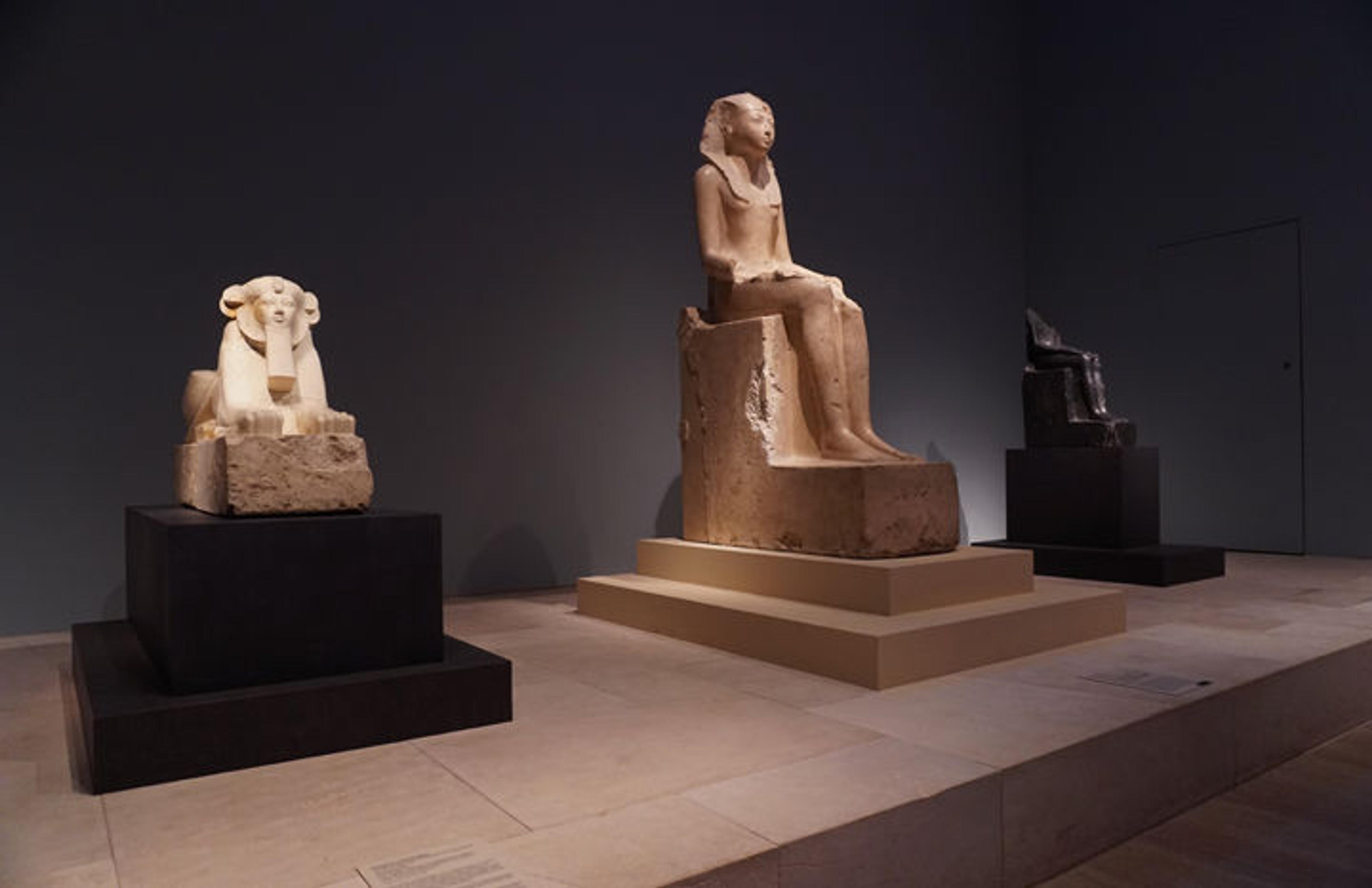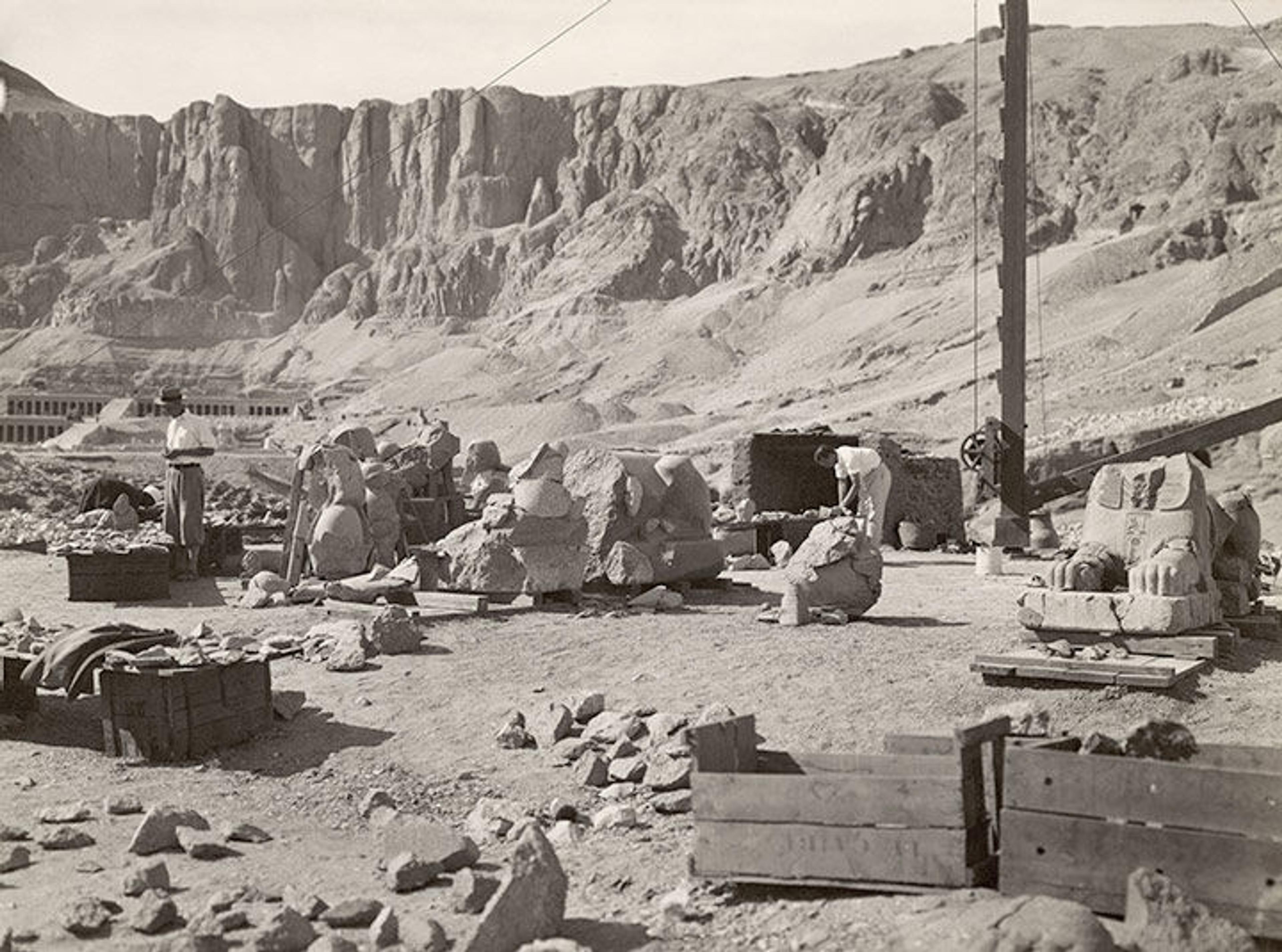Before the British scholar Terence Gray adopted the name Wei Wu Wei and began his studies in Taoism, he was a budding Egyptologist with an iconoclastic streak. In 1920, seemingly tired of history as it had hitherto been written, he published a biographic study of the Egyptian queen and pharaoh Hatshepsut written not as a dry academic tract, but as a drama.» It was no modest play: Gray, ostensibly warning readers about its complexities, boasted that it was longer than Shakespeare's Hamlet in its written form. For practicality's sake, he wrote, "an acting edition may be brought into existence by the omission of eight scenes."[1]
Yet writing a great story was only Gray's secondary task. His chief aim, he wrote, was to "reconstruct the life of one of the greatest women in history."[2] His play was intended as a corrective to the prevailing narrative of Hatshepsut's reign: that it resulted from a woman's deceitful intentions. By Gray's time, the scholarly consensus was that Hatshepsut could only have seized, not inherited, power following the death of her husband, the pharaoh Thutmosis II. Even two Met curators, William Hayes and Herbert Winlock, who excavated her funerary temple in the 1920s, were convinced she was a "vain, ambitious, and unscrupulous woman," as Hayes put it in 1953.[3]
This interpretation was driven largely by the erasure of Hatshepsut's memory after her death. In 1927, Winlock discovered a pit full of smashed statues of the pharaoh, which were ordered destroyed by her nephew, Thutmosis III, who became sole king after her death. (For the first part of his reign, they ruled together with Thutmosis III as the junior partner.) For Winlock and Hayes, the story was simple: Hatshepsut had usurped the throne, and Thutmosis III, who had grown tired of ruling alongside his aunt, was setting the record straight by carving her out of history.

Left: Hatshepsut. New Kingdom, Dynasty 18, joint reign of Hatshepsut and Thutmose III (ca. 1479–1458 B.C.). Indurated limestone, paint. From Egypt, Upper Egypt, Thebes, Deir el-Bahri & el- Asasif, Senenmut Quarry, MMA excavations, 1926–28/Lepsius 1843–45. The Metropolitan Museum of Art, New York, Rogers Fund, 1929 (29.3.2). Right: The reverse of the statue, which has remnants of yellow and blue pigment on Hatshepsut's headcloth
Today, thanks to more recent scholarship, that story has been revised. In 2005, The Met (with the Fine Arts Museums of San Francisco) organized the exhibition Hatshepsut: From Queen to Pharaoh, which presented her reign as a period of stability, prosperity, and artistic ingenuity. During her kingship, Hatshepsut reinstated trade with peoples in Asia, restored monuments that had fallen into disrepair during the Second Intermediate Period, and built a vast and innovative mortuary complex, Djeser-Djeseru.
The above seated statue of Hatshepsut from The Met collection illustrates one of the core problems the pharaoh had to confront: How should a female pharaoh be depicted? Although most sculptures and images depict her as a male king—such was the precedent for depictions of pharaohs—this one quietly emphasizes her femininity, especially in the softness of her face, her narrow nose, small mouth, and high cheekbones, all of which are relatively naturalistic. In addition, the statue has the king's titles written in the feminine form, describing Hatshepsut as "Daughter of Re, Lady of the Two Lands," a reference to Upper and Lower Egypt.
Similar descriptions on Hatshepsut's temple surprised early Western visitors. When Jean-François Champollion, who is credited with deciphering the Rosetta Stone and therefore had a sense of how to read Egyptian hieroglyphs, came across relief decorations on her temple, he was taken aback to find occasional feminine grammar. A female ruler was not completely unimaginable; the Ptolemaic Egyptian priest Manetho recorded the existence of several in his histories of Egypt, with which Champollion was familiar. But it was remarkable that Hatshepsut's memory, which Thutmosis III tried to erase, remained despite his attempted proscription. More than 1,300 years after she died, Manetho noted that her rule lasted more than 20 years. Considering all that, the literal meaning of Hatshepsut's name—"foremost among noblewomen"—could not be more appropriate.
To learn more about Hatshepsut, download a free copy of the Hatshepsut: From Queen to Pharaoh exhibition catalogue on MetPublications.

Seated statue of Hatshepsut on view in gallery 115, alongside other objects depicting the pharaoh
Notes
[1] Terence Gray, The Life of the King of the South & North Kamari'a, Daughter of the Sun, Hatshepsut (Cambridge: W. Heffer & Sons Ltd, 1920), xix.
[2] Ibid., xiii.
[3] William C. Hayes, The Scepter of Egypt: A Background for the Study of the Egyptian Antiquities in The Metropolitan Museum of Art, vol. 2—The Hyksos Period and the New Kingdom (1675–1080 B.C.) (New York: The Metropolitan Museum of Art, 1990), 82.
